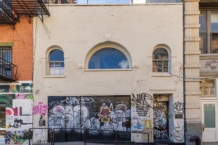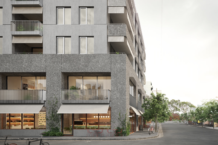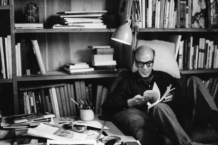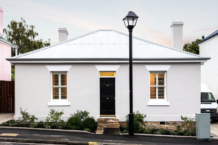Introducing CrowdSpot
Ideas - by Open Journal
Most of us have opinions and strong feelings about our neighbourhood and our city. But when was the last time you wrote a letter to council? Or attended a meeting at Town Hall? Enter CrowdSpot – a mobile, visual and interactive map-based platform that facilitates information collection and community engagement. Founder Anthony Aisenberg talks about its potential uses, its benefits and the process and ideas that led to its development.
How do you describe CrowdSpot to someone not familiar with it? What does it do?
We create interactive online maps that allow people to give input on geographic locations. It’s a very useful community engagement tool that can help for sharing knowledge, receiving feedback on infrastructure proposals or reporting issues.
An example could be that a city is developing their digital strategy and want to understand the locations where there is demand of free public WiFi. We would brand and configure the map and work with the city to encourage people to add a spot to the map where they want free public WiFi. Anyone can either add their own spot or vote, comment on or share existing spots.
The map could be open for a period of time, say 4 weeks, at the end of which we can export and present the results both the public and the local council.
What planted the seed for CrowdSpot? What needs did you see, what made you realise it was worth pursuing?
I was working in bicycle advocacy for Bicycle Victoria in 2011. My job was to understand how to get more bums on bike seats. Because unsafe roads are one of the major barriers to more people riding, the thinking was simply that if we create a safe bicycle infrastructure network, more people will ride. I just thought that there wasn’t a mechanism or easy process for people to contribute where they think improvements to the network should be made. So, if we got existing bike riders (who know every bump on the road) to pin spots on the map and add their votes to spots, then we could end up with a priority listing of the spots that needed fixing.
I finished at Bicycle Victoria but the idea lived on. We conducted surveys at intersections across the city. We asked two questions:
1) Could you readily identify an issue across the bicycle network in Melbourne?
2) If so, have you ever reported it to a council or road authority?
The results were clear. 85% of people could easily identify a problem on the network, but only 14% of those people had ever reported it to a council or road authority.
These results made me realise this was something worth pursuing. We concluded that there is so much valuable information locked in people’s heads that just isn’t being passed on to the people that make the decisions that affect our built environment.
What was involved in seeing the project from concept to completion?
Wow… what wasn’t? Articulating what problem we were trying to solve.
Building a prototype. Finding the right people to be involved with similar motivations and expectations. Choosing the right business structure. Designing a brand. Designing a website… and lots and lots of coffee dates.
I also don’t think the project is even near completion. We currently have a software product that I’m proud of but still think it’s far from complete. Not sure it is something that’ll ever be complete. It’s a constant process of learning and making things better along the way.
What other people or local practices did you work with to make the project come together.
My business partners Elliot Fishman and Tom Coleman have been key contributors in getting the project up and running. Other important cogs have been Suzy Tuxen of A Friend of Mine who designed our identity and Cameron Boyle who design our website. My girlfriend Elsa has been a high-value sounding board.
Why would somebody want to use CrowdSpot? What’s in it for the punter/user?
CrowdSpot’s aim is to provide a fun and easy way for people to give input on things they care about. As I mentioned, all too often we care about things but for various reasons never take any action. CrowdSpot is trying to pull down some of those barriers and bring people closer to the built environment they care about. Community engagement has traditionally involved attending town hall style meetings or that you fill-out a lengthy written form. CrowdSpot is mobile, visual and interactive.
The aim is for people to be part of a legitimate planning or feedback process that is as easy as clicking ‘like’ on Facebook. The hope is that, by creating an online engagement environment where the people participating are those who previously never did, we can assist decision makers to make decisions that reflect the views and priorities of the community.
And what’s in it for business, council, ‘the client’ etc
For the client CrowdSpot provides an opportunity to:
- Encourage a broader set of people who participate in a planning process
- Make it easier to engage with the community and understand the results of that engagement
- Be a leader in cutting edge digital engagement
- Make better, more informed decisions by understanding the views of the community
Can you share one or two projects/examples that capture the potential uses of Crowd Spot?
The first project we launched, the My EcoCity Map, was a collaboration with the Sustainable Living Festival and the City of Melbourne. The purpose of this project was to share knowledge of where Melbourne’s sustainable spots can be found. People can add spots across a range of categories including shopping spots, food spots or green building spots. A similar project that recently finished was the Bikefest Spot Share map. This project focused on collecting bicycle friendly spots around the city, such as bike friendly cafes and beautiful places to ride.
Another style of project can be around issue reporting. For example, we’re in the process of looking for a partner for a project around reporting disability access issues in public places.
How does CrowdSpot generate revenue?
CrowdSpot use a SAS (Software as a service) model to generate revenue. The service is broken down into three phases (Build, Contribution and Results). Depending on the complexity of the project the cost could vary considerably. Since we’re just starting out we’re looking to do as many projects as possible. We’ll be trying not to let a lack of budget get in the way of a great project. Get touch if you have ideas.
CrowdSpot
www.crowdspot.com.au
Facebook | Twitter
By Matt Hurst
A screen shot of a CrowdSpot map for City of Melbourne.
CrowdSpot identity by A Friend of Mine











